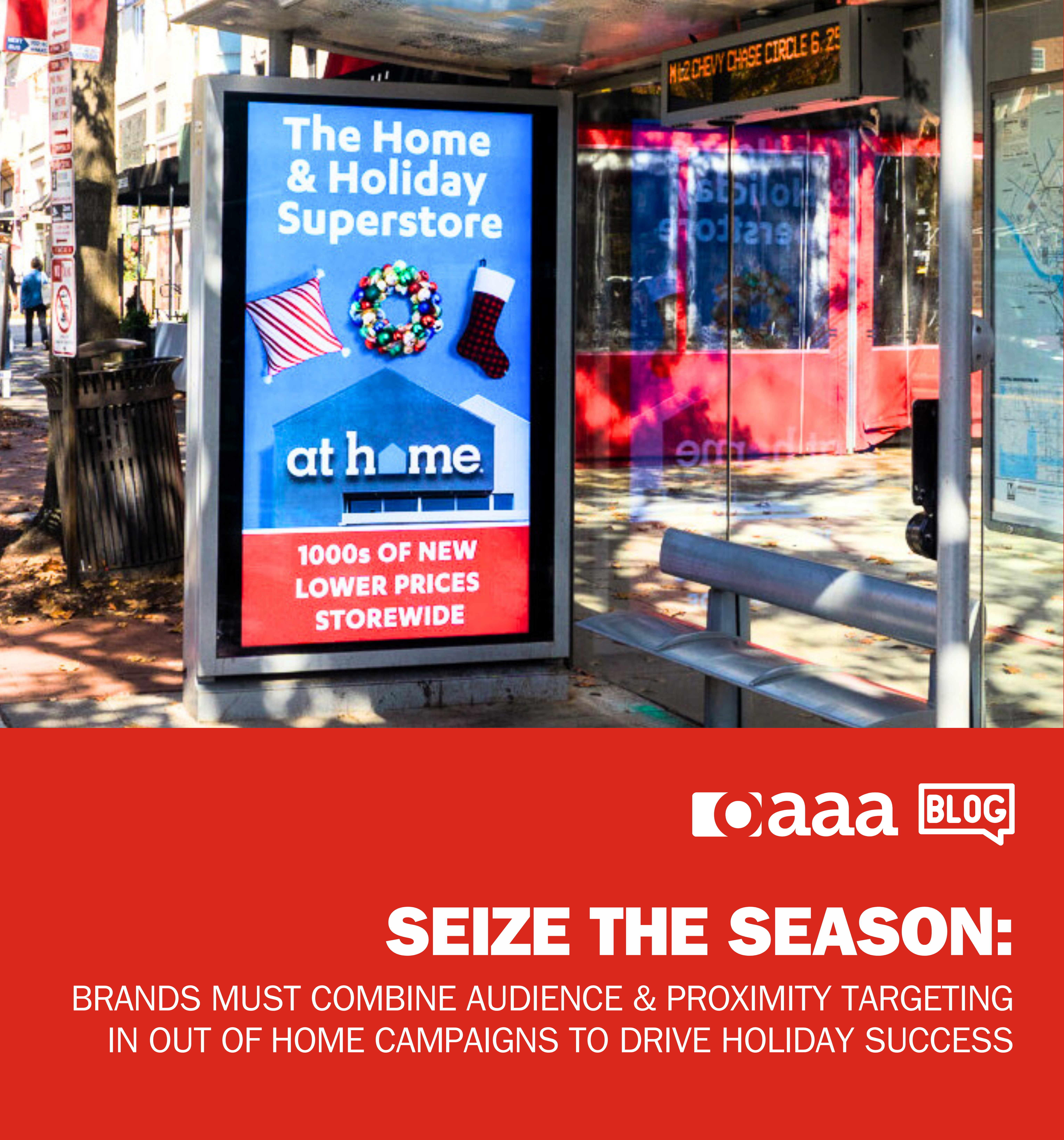
By: Nolan Panno, Manager, Research & Insights, Clear Channel Outdoor
The holidays are here, and brands are racing to capture consumers’ attention during this busy season. And there is reason for marketers and retailers to be excited. In 2024, Americans will be more celebratory, with 92% saying they plan to shop this season, an increase of six million from last year, and the highest participation rate since 2019. In this significant shift, over 80% of retail sales are projected to take place in-person this year.
These signs point to a strong season for retail, but marketers will face the challenge of cutting through the ad clutter to truly influence consumers’ wish lists. And if they only stick to marketing tactics of holidays past, don’t expect glad tidings.
Rather, for retailers to capture their share of consumers’ holiday spend, and for marketers to make the most of their ad buy, they must embrace an updated approach when it comes to planning this season’s Out of Home (OOH) campaigns. New research from Clear Channel Outdoor (CCO) suggests that if marketers aren’t combining OOH proximity targeting with audience centric planning to optimize their advertising strategy, they’re leaving money on the table.
To measure the impact of using the very latest in proximity targeting and audience-centric planning capabilities in OOH advertising, CCO conducted a thorough analysis of over 20 visitation studies across various campaigns, industries, markets and durations. Here are the insights we uncovered that can help make this a holiday season to remember.
Benchmarking Miles Traveled: Connect with Consumers Near and Far
A key aspect of our data analysis was establishing a benchmark for the typical distances people travel among their homes, workplaces and various points of interest (POIs). This approach serves as a crucial indicator of consumer behavior and OOH ad reach.
While proximity targeting is effective, with half of all consumers visiting POIs within five miles of their home, the key finding from our data analysis is that this strategy alone doesn’t drive best performance. Marketers must consider, and act upon, audience behavioral trends that illustrate how consumers travel in frequent journeys that are much wider and greater than five miles. Just waiting for consumers to be near your store to reach them misses out on the broader intent of advertising: to grow your business and attract new customers.
Extending a campaign’s reach to target specific demographic groups based on preferences, behaviors and lifestyle choices can effectively engage the other 50% of potential consumers. This audience-based targeting strategy leverages demographic precision and behavioral insights to ensure ads reach the most interested segments, even if they’re not in proximity to a brand’s location.
With 42% of adults reporting OOH ads have an impact on in-person purchase decisions, this audience-based approach allows advertisers to influence consumer decision-making as they move through their daily routines.
Source: Cuebiq / RADARProof, CCO RADAR, 21 studies in partnership with Cuebiq, 2021-2023
Optimizing Your Audience Reach
Last year, CCO used its RADARProof attribution solutions to measure visitation for a rapidly growing health-oriented quick-service restaurant (QSR) brand in Dallas-Fort Worth. The business sought to build their brand presence in the market, differentiate themselves from key competitors and drive visits to over 20 newly opened locations.
In partnership with CCO, the brand ran a robust campaign using proximity targeting within five miles of the business, generating nearly 19 million impressions over an eight-week period. While the campaign achieved a statistically significant lift of +5.3% in visits, we identified additional opportunities for growth and improved audience reach.
An analysis of the miles traveled by consumers from their home or work revealed that while nearly 50% of their visitors lived or worked within a five-mile radius of a store location, more than 50% traveled over five miles to one of the brand’s locations.
For future campaigns, this brand should consider the strategic use of audience-based targeting, leveraging audiences, such as those who visit gyms or fitness centers, or those who live a healthy lifestyle. As a growing brand establishing itself within a market, proximity targeting is key for reaching a hyper-local audience but relying solely on proximity targeting leaves opportunities untapped.
Tying Your Strategy Together
These insights demonstrate the power of OOH advertising and how that power can be fully maximized by combining proximity and audience-based targeting to capture consumers from near and far. This dual approach also maximizes the reach and impact of campaigns by ensuring strategic ad placement and demographic targeting.
For advertisers ready to deploy this strategy, it’s even easier to approach OOH media planning in this way as audience planning tools, like CCO’s RADARView, are available to help brands plan successful campaigns, and, as more agencies are embracing audience data today.
Marketers and media professionals often rely on familiar strategies when the pressure’s on, but today’s biggest and smartest brands are increasingly turning to OOH’s innovative audience planning and proximity targeting capabilities to stay ahead in the fast-paced advertising landscape and in the crucial holiday rush. This holiday season, savvy marketers should discover how the latest in OOH can turn the holidays into a gift that will keep on giving.
Published: October 30, 2024
